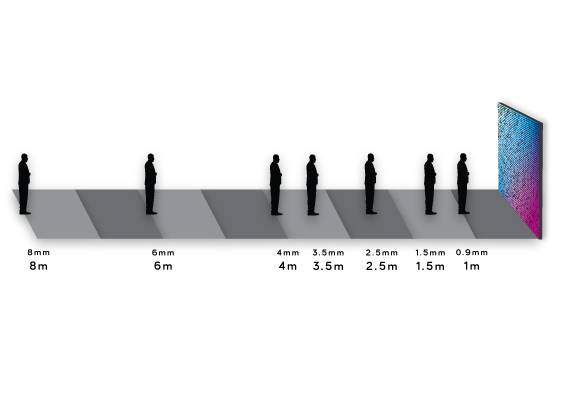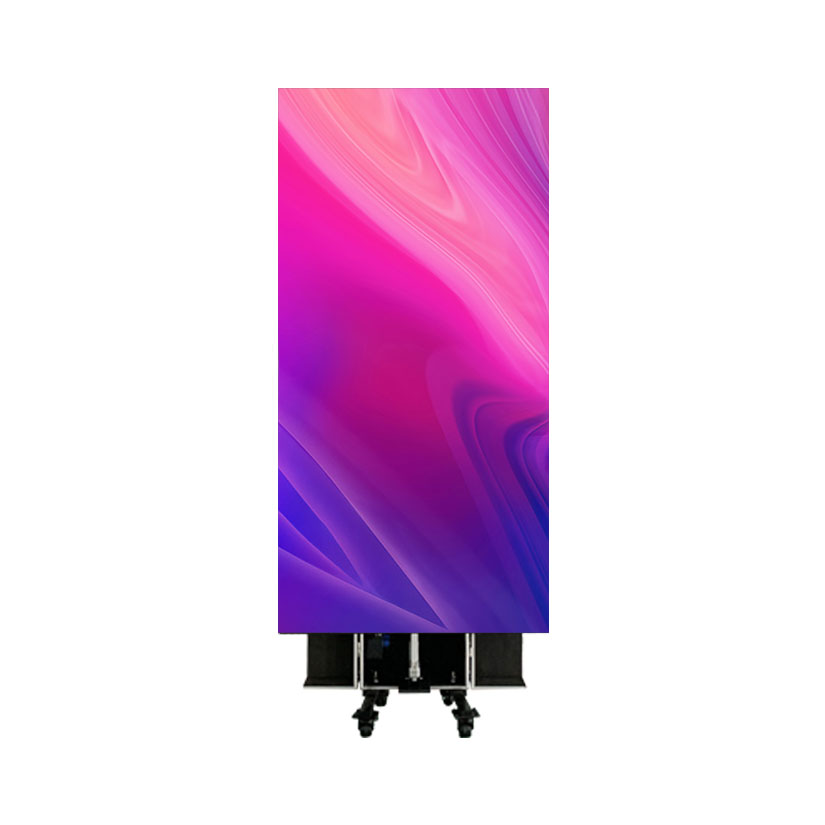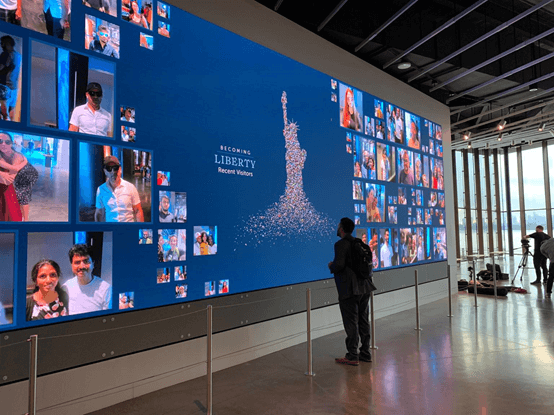Handy Info For Selecting Outdoor Fixed Led Display
Wiki Article
How Important Is The Brightness Ratio And Contrast Factor When You Are Researching Led Displays?
The brightness and contrast ratio are crucial elements to be considered when looking into LED displays since they significantly impact the visibility, clarity, and overall quality of the display, particularly in various lighting conditions. Here's why they are so important:
1. The visibility of different lighting conditions
Brightness: This is measured in candelas (candelas/square meter) and is used to determine the brightness of the display in different lighting conditions. Outdoor displays that are exposed to intense ambient light (like direct sunlight) the use of a bright brightness (typically between 10,000 to 5,000 nits) is essential to ensure that the information is clearly visible. Indoor displays generally require less brightness (between 500 and 1500 nits) but the brightness can be adjusted depending on the environment.
The display needs to be sufficiently bright to function in bright surroundings and also outdoors. A display that is too dim can be rendered useless as content is faded or inaccessible when exposed to direct sunlight.
2. Image Quality and Clarity
Contrast Rate The ratio of contrast is the difference which can be created between the brightest white and the blackest display. A greater level of contrast improves the intensity and vibrancy of colors while also improving sharpness and overall clarity. This is particularly important for displays that display high-quality content, like videos or images with high contrast.
Displays that have high contrast ratios can be able to accommodate content with various brightness levels. This is the case for movies advertisements, movies, and live broadcasts. For instance, on an LCD with a low contrast dark areas may appear grey, which can reduce the visual impact of the content.
3. Color Accuracy for Visual Impact
Brightness and Color Accuracy The brightness also affects accuracy of color. Accuracy of color is enhanced by having a display with an even brightness. This is important for advertising, branding and other areas of content where color accuracy is critical.
Contrast and Perceived Brightness Contrast can increase the perceived brightness of a display. Although two displays might have the same brightness, the one that has the most contrast ratio is likely to have more vivid and attractive graphics.
4. Energy Consumption
Brightness and Energy Efficiency: Higher brightness levels generally need more power. In order to balance brightness and energy efficiency, it's especially important for displays which operate in a continuous manner or as a part of the installation of a large scale. Advancements in LED technology have led to more efficient displays that offer the highest brightness while not consuming a lot of energy.
5. Content Versatility
Brightness for various types of Content: Brightness and contrast requirements will vary depending on content type such as text, static images, or dynamic video. Text-based contents benefit from high contrast, which makes it easier for reading. Video content might require a mix which balances brightness and contrast.
Application: In environments where the type of content changes frequently (e.g. advertising screens or event display), it's advantageous to have contrast and brightness adjustable settings. This will enable the display screen to adapt to different needs for content.
6. User Experience
Displays with a brightness adjustment feature enhance the user's experience by adapting to changes in ambient light throughout the day. This lets the display be always visible without causing eyestrain or glare.
Contrast and Eye Comfort Contrast and Eye Comfort: A high contrast ratio may reduce eye strain, making it easier for people to enjoy the contents for longer periods, which is important for public displays, events, or retail environments.
Conclusion:
The contrast ratio and brightness are essential to ensure that the LED display is able to function at its best in the setting it is intended for, delivering clear, vibrant content. The overall performance of the display and user experience is greatly influenced by whether the display is placed indoors or outdoors in dim or bright conditions. By balancing the elements of energy efficiency as well as display and content needs with these factors and deciding on the right display. Read the recommended creative led displays for website info including led light board, led display transparent, led transparent display, led screen panels, digital display, led the wall, transparent led display screen, led display transparent, led light board, transparent screen monitor and more.

How Important Is Weight And Portability In The Research Of Led Displays?
When looking into LED displays, the weight and portability are crucial aspects to consider particularly in applications which require flexibility as well as ease of installation and transport. These aspects are essential:
1. Ease of Installation and Setup
Weight: Lighter displays are easier for installers to work with especially in situations in which LED displays have to be installed on walls, ceilings or any other structure. Installation of heavier displays requires support structures that are more sturdy which may increase installation costs and complicate the process.
Portability: Portable displays can be set up quickly and removed which makes them ideal for temporary installations, events, and trade shows. The lightweight design of these displays means that they are easy to transport which reduces the amount of time and work needed for every setup.
2. Rental and Staging
Portable and lightweight LED panels play a crucial role in the rental and staging market, where displays move frequently from one location to the next. They enable shorter turnaround times between events, lower the cost of transportation, and reduce the possibility of damage occurring during handling.
Modularity - LED display systems for portable use typically have a modular style, making them easy to put together and take down. It is essential to have this flexibility when creating customized displays for various occasions.
3. Structural Requirements
Support Structures: Larger LED displays require more robust and more intricate mounting structures, which can add to the overall expense and complexity of the installation. Contrary to bigger displays, simpler, cheaper structures can accommodate them, making them versatile for various settings.
Venue Constraints Some venues will have weight limitations on their structures. This is often the case with ceiling or wall mounts. It is essential to select a lightweight installation to fit within the venue's weight limits.
4. Transport and Logistics
Shipping costs: The weight of LED displays can have a direct impact on handling and shipping costs. It is more affordable to ship lighter displays, particularly for large-scale deployments.
Storage and Handling: Portable and lightweight display units are simpler to store and handle with less space, and simpler logistics, which is essential for businesses who often transport displays to various locations.
5. Flexibility in Use
Reconfigurability Displays that are lightweight and portable are often made of modular components, allowing the reconfiguration of various sizes and shapes to suit various purposes. This is particularly useful to create installations that are creative, and where the flexibility of design is crucial.
Displays that can be used for multiple applications: They are able to be used in a range of settings, ranging from small pop-up events to large-scale outdoor events, offering versatility that more heavy, cumbersome displays cannot match.
6. Safety Factors
Lower risk: Lighter display panels are less likely to trigger accidents when they are being installed or handled. This reduces the chance of causing damage. It is vital in areas where there are frequent adjustments or movement of the display.
Compliance: In some cases weight limitations may be mandated by regulations regarding safety for installation in public areas. For compliance reasons, it's essential to make sure that the display meets the standards.
7. Energy Efficiency
The weight of a display isn't always directly related to power consumption, but lightweight displays are designed to be efficient in energy use. A portable LED display could use less power, which is a great benefit for environments with limited power sources or are looking to lower operational costs.
Conclusion:
LED displays are very light and portable device. This is especially important when it comes to applications that require constant movement, temporary installation, or environments where there are structural limitations. These factors affect not only the transportation and installation, but also the safety and price of the display. Weight and portability should be thought of when looking at LED display options when you are required to frequently move, swiftly set up, or meet specific structural or safety requirements. See the recommended led rental screen for blog info including monitor transparent, led the wall, led transparent display, display screen led, led in walls, outdoor screen led, led video wall panels, digital display, digital display, led wall panels and more.

What Are The Most Crucial Factors When Choosing Led Displays For Color Accuracy?
In particular, color accuracy and calibration is vital for LED displays that need to be utilized in applications that require high-quality visuals. What are the reasons these elements are essential:
1. Realistic Realism and High Quality Visuals
Color Accuracy: How accurately can LED displays reproduce the colors designed by creators of content? High precision in color ensures that photos and videos appear real and vibrant, and appear like they ought to.
Importance: In applications like advertising and broadcasting, retail and professional presentations, accurate colour reproduction is vital for keeping the visual appeal intact and conveying the message.
2. Brand Integrity
Consistency in branding Businesses who depend on certain colors to define their brand, color accuracy is essential. Colors that don't match could misrepresent an image or cause damage to its brand's image.
Application: In retail displays as well as corporate settings and advertising, ensuring that colors are maintained exact is crucial for a consistency in brand representation across all media and platforms.
3. Engagement and its impact on the Audience
Improved Viewer Experience: Displays with high-quality color accuracy create an immersive and stimulating atmosphere for the viewers. Color-accurate displays convey emotions with greater effectiveness and boost the overall impact.
Application: In entertainment venues or museums, or any other place where the content is designed to evoke specific emotions, accurate color reproduction ensures that viewers are able to experience the content exactly how it was intended.
4. Content Creator Intent
Designers, artists, content creators, and others often spend an enormous amount of effort to create visuals that use specific colors. An LED display that can accurately reproduce these colors can ensure that their work is presented exactly as they intend.
Application: If you work in the field of digital art, film photography, or other fields where color is a critical component of aesthetics and storytelling, keeping color accuracy in mind will ensure that the creator's vision is taken into consideration.
5. Calibration to ensure Consistency
Uniformity Across the Panels. The process of calibration ensures that the LED panels are calibrated to show consistent colours and brightness. This avoids any apparent seams or mismatches. This is crucial, particularly for large-scale displays with multiple panels.
Regular Maintenance: Even the most accurate displays can lose their color accuracy with time. Regular calibration is required to ensure that the display is performing consistently and ensure that the display continues to meet quality standards.
Application: For video walls or large outdoor screens or any multi-panel configuration, calibration is key to getting a smooth and uniform appearance. This is essential for high-profile and professional installations.
6. Effect of Content Types
Different content needs various types of content require different requirements for accuracy in color. For instance medical displays have to be extremely accurate in order to give a proper diagnosis, while advertising displays might prioritize vibrancy and saturation.
Application: In certain fields such as medical image, design and high-end retail, the ability to finely adjust color settings ensures the display is in line with the requirements of the information it displays.
7. Technology and Specifications
Bit Depth (and Gamut) Displays that have high bit depths and displays with wide color ranges (like DCI P3 or rec. 2020 ) offer better accuracy in color. It also allows for a more colors. Knowing these specifications is crucial when selecting a monitor for use in areas where accuracy of color is of paramount importance.
Advanced Calibration Tools: Modern LED displays typically have sophisticated calibration tools and software that permit precise adjustments, which ensures that the display is accurate throughout the time.
Application: For industries where the quality of color is not a matter of debate, such as graphic design, film production, and high-end advertising, investing in displays with higher accuracy in color and calibration capabilities is essential.
Conclusion:
For LED displays to deliver visuals of high quality that are in line with standard brand guidelines and true to the content creators' intentions, color accuracy and calibration is critical. If the display is being used for advertising, entertainment, professional presentations, or for specialized fields such medical imaging, accurate color reproduction is vital to achieving the desired impact and maintaining visual integrity. When considering LED displays, you must prioritize accuracy in color in calibration, consistency, and consistency particularly when your project demands accurate colors. Take a look at the best lightweight led screen for more examples including led panel rental, led screen rental, led transparent display, translucent led screen, church led wall, led board rental, transparent display monitor, flexible led screen display, church led wall, advertising displays and more.
